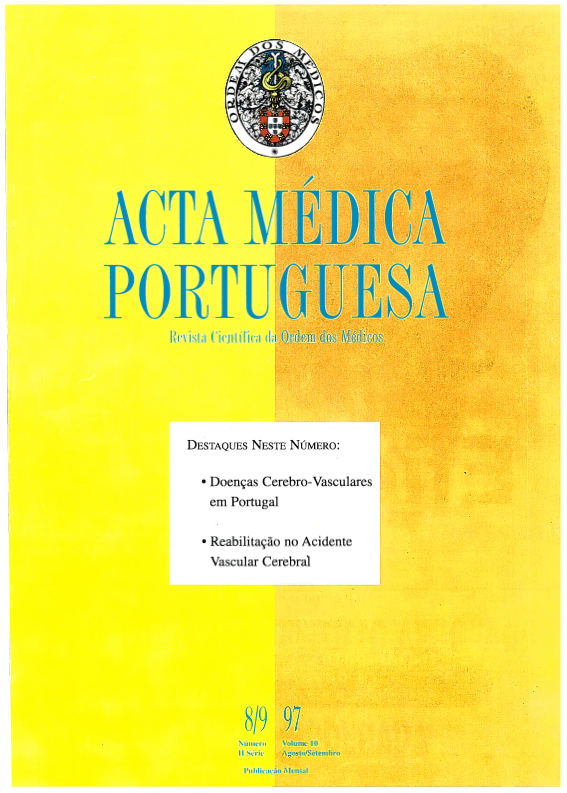Reabilitação no acidente vascular cerebral: do hospital à comunidade.
DOI:
https://doi.org/10.20344/amp.2464Resumo
The field of action for rehabilitation is that of making use of the patient's maximum functional capacity with the purpose of adapting to life in relation to the environment. Rehabilitation must commence immediately, although it may be in different forms from the acute phase to sequelae. It is considered appropriate to call the physiatrist as soon as the neurologic condition has stabilised. A list is made of the measures to be taken for rehabilitation in the acute phase and sequelae, and the composition of the rehabilitation team is described. In what concerns location, where to rehabilitate the patient? The group of ambulatory patients should have their rehabilitation as outpatients. Our experience with house calls is briefly described. The group of patients who cannot walk, those that present an eminently motor condition, with the possibility of being able to walk, should be with their families, with transport provided to health and rehabilitation centres. The second group, with the capacity of walking within a reasonable time, especially if with multiple associated problems such as impaired communication, should be hospitalised in a rehabilitation department. The third group consists of severely handicapped patients, for whom a solution must be found that provides life with a minimum of dignity in centres or homes. From among the measures to be introduced, we point out following: acquisition of transport for patients who must travel, as outpatients, to the department; providing family doctors with complete freedom to refer their patients to rehabilitation centres.Downloads
Downloads
Como Citar
Edição
Secção
Licença
Todos os artigos publicados na AMP são de acesso aberto e cumprem os requisitos das agências de financiamento ou instituições académicas. Relativamente à utilização por terceiros a AMP rege-se pelos termos da licença Creative Commons ‘Atribuição – Uso Não-Comercial – (CC-BY-NC)’.
É da responsabilidade do autor obter permissão para reproduzir figuras, tabelas, etc., de outras publicações. Após a aceitação de um artigo, os autores serão convidados a preencher uma “Declaração de Responsabilidade Autoral e Partilha de Direitos de Autor “(http://www.actamedicaportuguesa.com/info/AMP-NormasPublicacao.pdf) e a “Declaração de Potenciais Conflitos de Interesse” (http://www.icmje.org/conflicts-of-interest) do ICMJE. Será enviado um e-mail ao autor correspondente, confirmando a receção do manuscrito.
Após a publicação, os autores ficam autorizados a disponibilizar os seus artigos em repositórios das suas instituições de origem, desde que mencionem sempre onde foram publicados e de acordo com a licença Creative Commons









